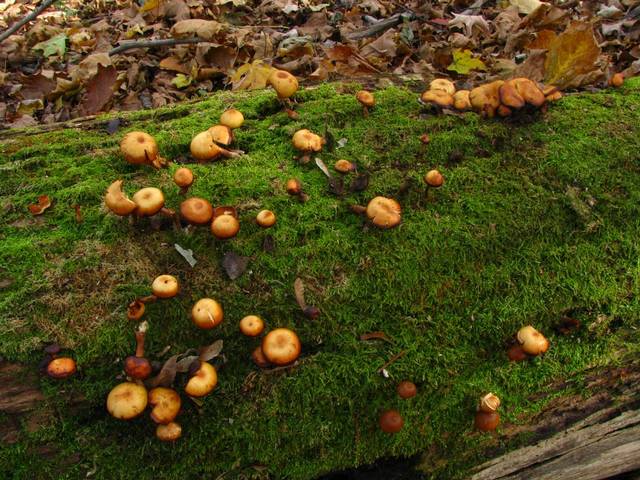Interactions
Galerina autumnalis can be found in association with many different organisms. One of which is known as the scrumptiously edible humongous fungus! Armillaria gallica is pictured below alongside G. autumnalis. These two may be easily told differenciated by this comparison, but when you stumble upon them independently the answer may not be as simple.
On the left is G. autumnalis and the right
On the left is the cap of A. gallica and on the
is A. gallica.
right is G. autumnalis.
A common mistake made is trying to eat a hallucinogenic
mushroom and winding up eating a handful of Galerina
autumnalis! A few of these include
Psilocybe cubensis along with
Psilocybe cyanescens.

In result of G. autumnalis creating the amanitin toxin, there are no confirmed organisms that use this as a source of food. In this sense, Deadly Galerina is at the top of a very short food chain as it decomposes dead or rotten wood.
As mentioned in the habitat page, G. autumnalis tends to be found in association with moss. There is no study to confirm or discourage the exact relationship these two organisms share. It may just be that they both prefer the same habitat.
Dan Molter 2011
*REMEMBER*: Do not eat a wild mushroom if you are not 100% sure on the identification!
Back to habitat Go home Continue to reproduction
